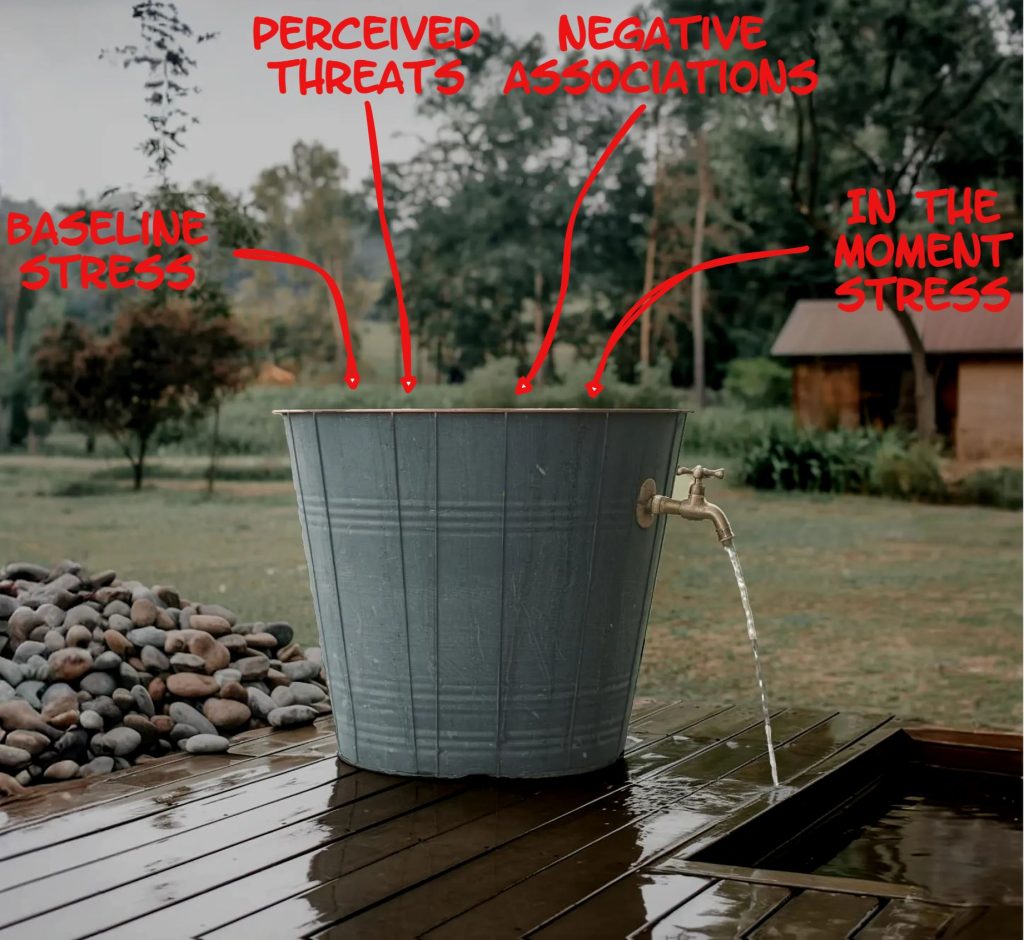Flinch is one of the most common problems that shooters face and one of the most frustrating because of how it comes back again and again.
If we look at what flinch is…it’s a minor form of the startle-flinch response that originates deep inside the brain in the amygdala.
When the amygdala feels like it’s safety is threatened too much, it takes over control from the logical parts of our brain and does what it thinks it needs to do to survive.
Since flinch is not logical, attempting to fix flinch with logical solutions seldom works very well.
Shooting is kind of unique in that it provokes all 4 of our primal fears…
2 that we’re born with:
Fear of falling
Fear of loud noises
And 2 that we develop the first week after birth:
Fear of Looming Objects (stuff appearing to get bigger because it’s getting closer)
Fear of Suffocation
Falling is a big one. Falling is the #1 cause of non-automobile accidental death in the world…and since it always has been, our brains are wired to place a high priority on not falling. Even if it means sacrificing performance.
We can imagine the threat from all of these fears going into a ‘threat bucket’ in our brain.

If the threat level gets high enough, it starts to overflow. Logical thinking gets diminished and the amygdala hijacks bodily functions…including flinch.
So, if we want to reduce or eliminate flinch, it’s simply a matter of reducing perceived threat levels in the brain, starving the amygdala, and feeding the logic centers of the brain.
Since the brain places so much weight on not falling, when we reduce the threat of falling, we also reduce the odds of flinching.
Ironically, most ‘balance exercises’ that people do to improve balance do not transfer well to balance for shooting…like using balance balls, slack lines, or other popular exercises that are promoted for balance. In addition, for shooting, we really want solutions that will work in as fast as a minute or two…not something that will take weeks to see benefit from.
For shooting, we can reduce the threat from falling very quickly in a few different ways:
-Shooting a firearm with less recoil
-Shooting with a better stance
-Sitting or laying instead of standing
-Doing visual, inner ear, and body awareness drills to upregulate the parts of the brain that are directly responsible for balance…that can dramatically improve balance in minutes or seconds.
It’s easy to think that ‘upregulating the brain’ would be complicated and difficult…but it’s not. It’s actually much quicker and simpler than most things that people try in hopes of improving their balance.
And it’s just one of several things that we cover in the Fix Flinch Fast LIVE! Training that we’re doing tomorrow (Monday).
I’ll be sharing methods and techniques that we’ve used to save multiple officer careers this year and that have helped hundreds of shooters finally stop flinching in minutes or even seconds when they thought they’d tried everything possible.
That’s because the things that we’ll be covering are very different than what is normally taught. It’s further upstream than technique or even psychology. We’ll be covering drills that go straight to the neurological source of flinch to fix it fast.
So…if flinch has been a challenge for you or your students, you’ve got 2 easy options this week. If you know you want to sign up, you can do so right now by going >HERE<
If you want to read all of the details on what’s covered, you can read all about it >HERE<
Questions? Comments? Fire away by asking below…
Leave A Response